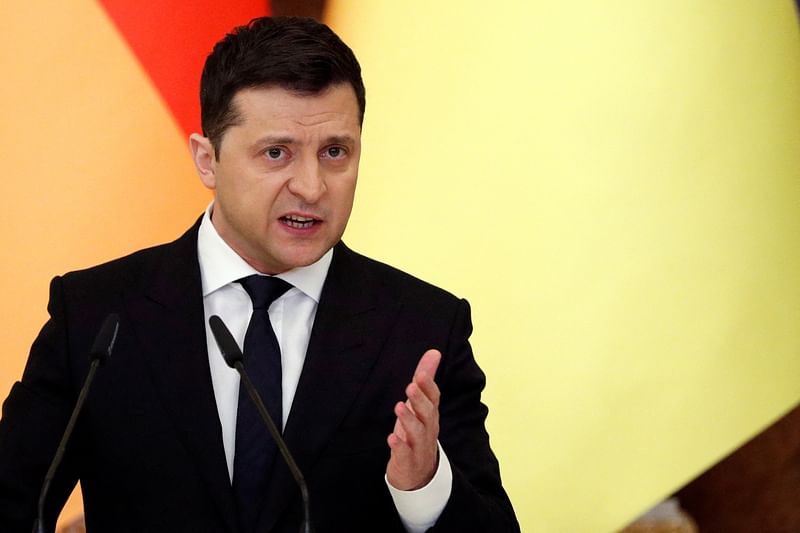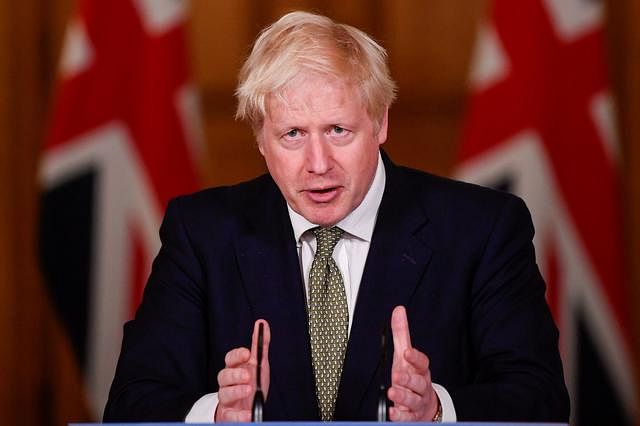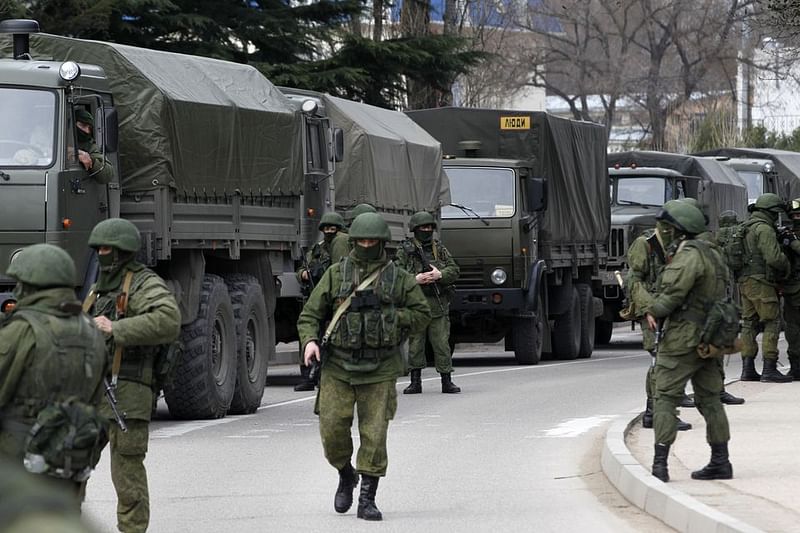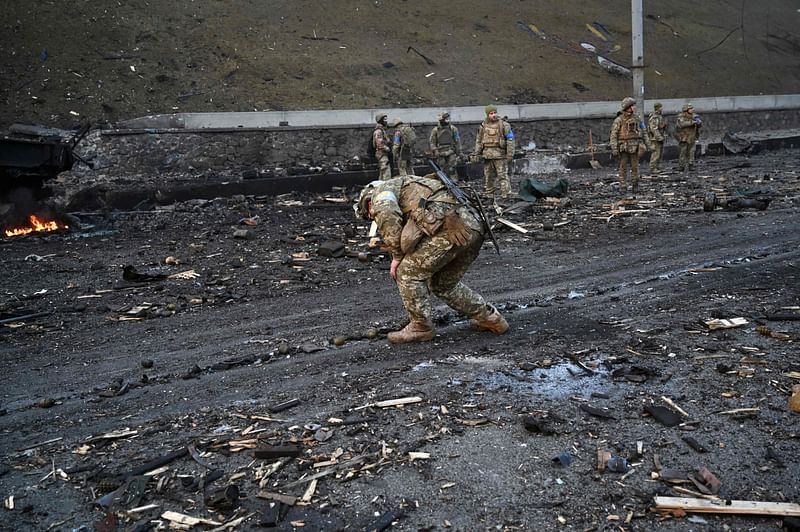POBNEWS24, Dhaka, Mar 2, 2022 : March 2 is the seventh day of the Russian invasion of Ukraine. Russia has intensified its attacks on the country. Russian troops have recently taken control of the southern Ukrainian city of Kharsan. Attacks continue in other cities, including the capital, Kiev. A large fleet of Russian armored vehicles is advancing towards Kiev. The fleet is now about 15 miles northwest. A second round of talks is set to take place between the Ukrainian and Russian delegations on Wednesday in the wake of the attack. The first round of talks held last Monday ended without any agreement. It remains to be seen whether the second round of talks will yield any results.
The United Nations says at least 138 people, including 13 children, have been killed in Russian attacks in Ukraine since Thursday. But Ukraine says the death toll has risen to more than 300.
The United Nations says more than 675,000 people have been forced to flee Ukraine to neighboring countries to escape the war.
The International Court of Justice (ICJ) in The Hague will begin a public hearing next Monday on allegations of Russian war crimes in Ukraine.
Russia’s Defense Minister Sergei Shoigu has said that the operation in Ukraine will continue until the goal is achieved. In his first State of the Union address, US President Joe Biden said that Russian President Vladimir Putin alone was responsible for the aggression in Ukraine. For this he will have to pay a high price in the long run.
Readers have many questions about the ongoing Ukraine crisis. The report tries to find answers to those questions with the help of BBC.
When did the crisis begin?
Considering the recent history, the current crisis started in 2014. But to get to the root of the crisis we have to look back to the Soviet era. Ukraine was then part of the Soviet Union.
Two political currents prevail in Ukraine. A trend wants to be closer to Western Europe. They are interested in joining the European Union (EU) as well as being a member of the Western military alliance NATO. The other section is pro-Russian. They want to stay in Russia.
A large part of Ukraine’s population is Russian-speaking. They are also ethnically Russian. They have close cultural and social ties with Russia.
Pro-Russian President Viktor Yanukovych was ousted in 2014 in the face of protests. He fled the country.

Yanukovych wanted a major trade deal with the EU. Then Putin increased the pressure. Under pressure, Yanukovych withdrew from trade talks with the EU. As a result, mass protests against him began in Ukraine.
Those who came to power in Ukraine after Yanukovych are known as pro-EU. Putin was outraged by their actions.
After the fall of Yanukovych, Russia occupied the Crimea region of eastern Ukraine.

Why occupy Crimea
Crimea has been part of Russia for almost 200 years. In 1954, Soviet leader Nikita Khrushchev ceded Crimea to the then Soviet Republic of Ukraine. At the time, the Russian leadership did not think that the Soviet Union would collapse.
Crimea has a lot of geopolitical importance. Crimea is strategically important to Russia. So Russia took the opportunity to occupy Crimea from Ukraine.
What Russia demands
Ukraine is not a member of the Western military alliance NATO. But the country wants to be a member of NATO. Russia refuses to comply. That is why Russia wants assurances from the West that Ukraine will never be a member of NATO.
At the request of Russia, the Western countries are not willing to give any assurance in this regard.
Putin believes that the West, which surrounds Russia, is using NATO. Ukraine may also be taken to NATO for this purpose. That is why he opposes the expansion of NATO in Eastern Europe.
Russia alleges that by the end of the last century, the United States had promised NATO that it would not expand eastward. But this promise was not kept.
The United States has denied the allegations in a statement issued Friday stating “Similar, baseless allegations concerning Russia’s intelligence have been made more than once.
NATO says it is a defensive military alliance. Every country has the right to choose the path of defense.

Why Russia is worried
The Soviet Union collapsed in the early 1990’s. Putin sees the breakup as a geopolitical catastrophe for Russia. Since then, Russia has seen the military alliance, NATO, slowly encircle them. For good reason, Russia is concerned about its security.
In 1999, the Czech Republic, Hungary and Poland joined NATO. Bulgaria, Estonia, Latvia, Lithuania, Romania and Slovakia joined in 2004. Albania joined in 2009.
Georgia, Moldova or Ukraine also have aspirations to join NATO. But because of Russia it has not happened so far. However, there are pro-Russian rebels in these three countries. If any of these countries join NATO, it will be difficult for Russia to accept.

Why Russia’s gas is a big issue
Russia’s biggest weapon, apart from its weapons, is its fuel. Russia accounts for 25 percent of Europe’s total oil and gas supplies.
Ukraine is Russia’s gateway to gas supplies to Europe. Major gas pipelines from Russia to various European countries pass through Ukraine.
As a result, if Ukraine moves out of Russia’s sphere of influence, Russia could lose its monopoly on gas supplies.

Is NATO united?
NATO chief Jens Stoltenberg said the alliance’s main task was to protect all allies. Attacking one means attacking everyone. The Coalition’s policy-making body has decided to activate the defense plan it has to defend other countries. That means NATO troops will be deployed where needed.
However, no Western country has so far agreed to send troops to Ukraine.
But 26 countries, including Germany, the United States and the United Kingdom, have pledged to stand by Ukraine with arms, ammunition and military equipment. The US media outlet Sky News reported that the weapons being sent to Ukraine included lethal weapons such as ammunition, tanks and anti-aircraft weapons.

Recognition of Donetsk and Luhansk
Amid tensions with the West over the deployment of tens of thousands of troops on the Ukrainian border, President Putin on February 21 recognized Donetsk and Luhansk, two areas of the country’s pro-Russian separatist-controlled territory, as independent states. At the same time, he instructed Russian troops to serve as “peacekeepers” in the two “republics.”

Sanctions against Russia
Putin’s move on February 21 prompted a series of sanctions against Russia.
The United Kingdom has imposed sanctions on five Russian banks and three Putin-linked tycoons.
US President Biden has announced sanctions against two Russian banks and five millionaires.
Russia’s 26 individuals and entities have been banned by the European Union. The country’s 351 MPOs are under EU sanctions. Russia’s funds in EU banks will be frozen.
Germany has suspended the ongoing Nord Stream 2 gas pipeline project to import gas from Russia.
Canada and Japan also imposed sanctions on Russia.

Emergency
A 30-day state of emergency was declared in Ukraine on the night of February 23. Oleksiy Danilov, secretary of Ukraine’s National Security and Defense Council, said the state of emergency would continue throughout the country, except for Donetsk and Luhansk.
Ukraine replaces its reserve forces with regular forces to prevent Russian aggression. Citizens of Ukraine are also told to be ready for war.
Ukrainian President Volodymyr Zelensky said in a speech on the night of February 23 that a Russian invasion of his country could trigger a major war in Europe.

Instructions for the start of the campaign
Moscow has been at loggerheads with the West over the deployment of hundreds of thousands of Russian troops on the eastern Ukrainian border. Westerners, including the United States, have said Russia is planning an attack on Ukraine. Russia, however, has said Moscow has no plans to attack Ukraine. In the end, that fear came true.
In a televised speech on the morning of February 24, Russian President Vladimir Putin ordered the launch of a special military operation in the separatist-controlled Donbass region of eastern Ukraine. Announcing the start of the military operation, Putin called on Ukrainian troops in eastern Ukraine to lay down their arms and return home.

Attack from three directions
Following Putin’s instructions, Russian troops launched an air, ground and water attack on Ukraine in the early hours of February 24, local time.
The Russian army attacked from the north, south and east. There were also attacks from Belarus. Russian troops were already stationed there.
The United States and the United Kingdom have imposed new sanctions on Russia in response to a full-scale attack on Ukraine. Strict sanctions have been imposed on various Russian banks and institutions, including President Putin and his close associates. Swift has taken steps to ban some of the country’s banks from conducting international financial transactions.
The United States and its allies are working hard to isolate Russia from the world order. Russia’s airspace has been suspended in most European countries, including the United Kingdom, Germany, Poland and the Czech Republic.







